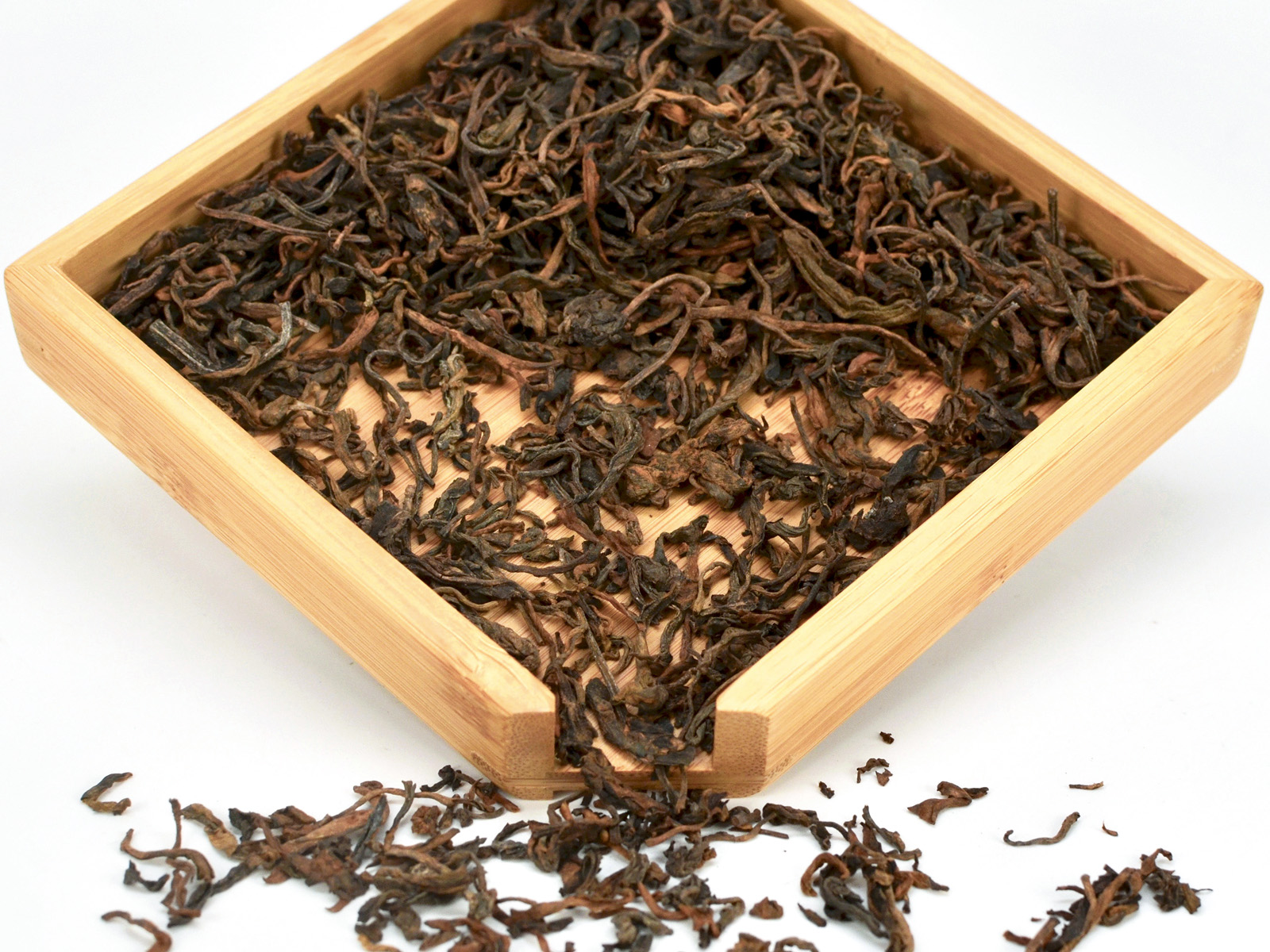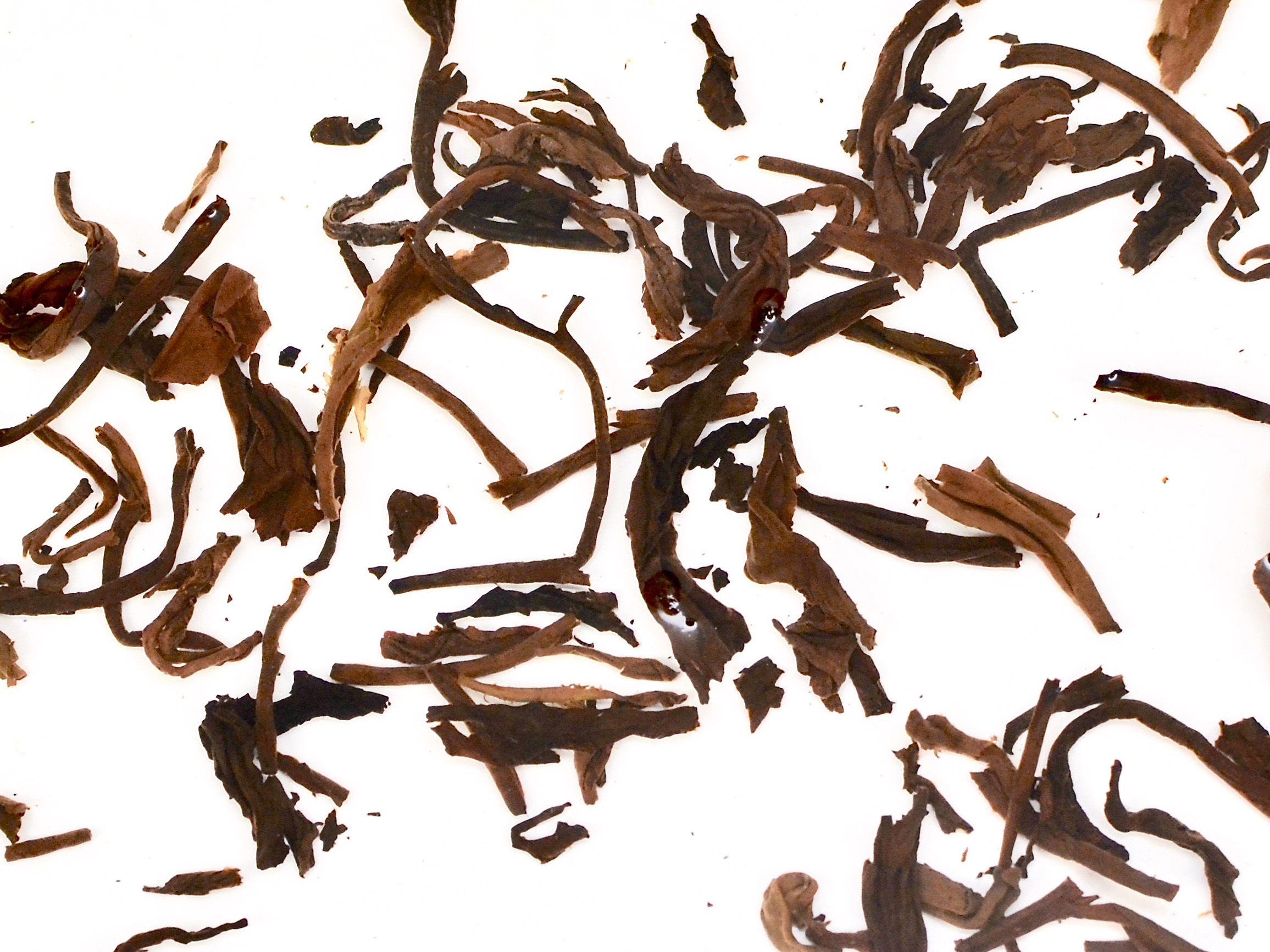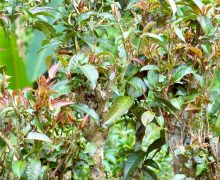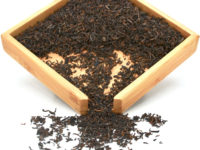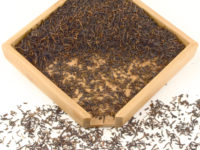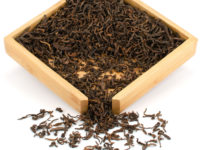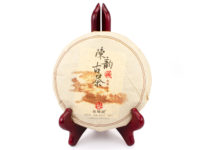Zi Ye Shu (Purple Leaf Shu Puer)
Loose Leaf Shu Puer
Made from the high-quality young leaves of older forest grown tea trees whose new growth displays a striking purple color when it first flushes in the spring. A remarkable loose-leaf shu puer with a rich, dark brew and a mellow smooth flavor with developing sweetness. Possesses a rose-like fragrance unusual for a shu puer.
- Tea Origin
- Jinggu County in Pu'er City, Lincang City, Yunnan Province, China
- Tea Bush
- Zijuan Quntizhong (Purple Leaf Heirloom Yunnan Tea Tree)
- Tea Maker
- Gong Liping and Ran Yijun
- Harvest Time
- Early April
- Plucking Standard
- One bud, two leaves
This unusual tea is made from the young leaves of old tea trees whose new growth displays a striking purple color when it first flushes in the spring. The leaves of these rare and highly prized purple tea plants are darkest when they are young, fading to a more usual green color as they mature.
The result of this high-quality leaf material and careful processing is a truly remarkable loose leaf tea with a beautiful rose-like aroma that is rare in a shu puer. The rich, dark brew has no traces of the heavy earthiness commonly found in other shu puers. The distinctive character of the purple leaves contributes to the tea’s rich aroma and developing sweetness, while blended green leaves from Lin Cang contributes to its deep, lingering taste.
The rare purple leaf tea plant
Tea made from purple leaf tea plants yields a complex and layered flavor and is rich in nutrition. Our Purple Leaf Shu Puer is sourced from Jinggu County in Yunnan Province, which is home to more purple leaf tea bushes than any other region in Yunnan. Purple leaf bushes are difficult to find and require many different conditions of soil and environment to grow. A tea plant that exhibits purple-colored new growth will always produce purple leaves every year. Purple leaf teas are even mentioned in the famous first book about tea, Cha Jing by Lu Yu, who described them as being higher in quality.
Jinggu County in southern Yunnan is famous for having many varieties of old Camellia sinensis var. assamica tea trees, as well as producing other agricultural goods such as fruit and corn. Jinggu now has more purple leaf tea plants than other regions because in the 1960’s, the Chinese government purposefully propagated seeds from tea trees that produced purple leaves. Since tea plants grown from seed are all genetically different, some of those seeds gave rise to new purple-flushing tea plants, while others were the usual green color. Our Purple Leaf Shu Puer comes from the purple tea trees that were grown at this time, which are now 50-60 years old. The trees’ maturity lends them a smoother and sweeter flavor than young tea plants can produce. While these seed-grown plants growing in the natural mountainside gardens of Jinggu are only purple when they first flush, some second-generation plants grown in the lab from cuttings of these trees remain a stunning dark purple color even when fully grown.
Processing
This tea is harvested in early spring at the end of March through mid-April. The new growth is plucked from these 50-60 year old tea trees when it has grown into a sprig with one bud and two newly opened leaves. The leaves from these plants must be plucked quite young while they retain their purple color, otherwise they will fade to a lighter purple as they grow and eventually turn green as they mature. Most of the leaf used to make this tea is purple leaf tea from 2011. However, shu puer requires very large amounts of 10 tons or more of tea to go through the fermentation process. Furthermore, most of the purple leaf crop each year is sold to sheng puer producers, since few people have the skill to process such high quality leaves into shu puer while retaining their complex character. The makers of this tea supplemented the 2011 purple leaves with some purple leaves from 2012, as well as some high-quality leaves from the Lin Cang area in southwestern Yunnan. While the leaves from Lin Cang are not from purple leaf plants, the high-quality material comes from old tea trees that are 100-200 years old and grown at a very high elevation of at least 1500m.
When shu puer is produced, the fresh tea leaves are plucked, fried, and kneaded into a twisted shape, then allowed to dry naturally under the sunshine. This results in a preliminary, unfinished dry tea known as mao cha, which can be stored as long as necessary and improves in quality as it ages, further developing the aroma of the tea as it undergoes natural slow fermentation. When dried, the maocha from the purple tea plants appears very dark in color with a slight purple tint, while regular puer maocha from looks dark green.
Both teas used in Purple Leaf Shu Puer are of approximately grade 5 quality. Because the tea material used to make Purple Leaf Shu Puer was collected at different times, the leaves were stored as maocha until they were all mixed together and put through the accelerated fermentation process that distinguishes shu puer from other types of tea and gives it its smooth, sweet character. Most shu puer producers use lower quality maocha from younger C. s. var. assamica plants that are under 40 years old, in order to offset the risk of a 10-ton batch of tea going wrong during the fermentation process. However, these high-quality leaves were processed very carefully by experienced tea masters in Puer City over 63 days. Processing shu puer in large batches like this is necessary in order for the thickly piled leaves to produce the appropriate amount of heat to drive the fermentation process.
No chemical fertilizer, pesticide, or herbicide was used in the production of this tea. Click here to read more about our promise to fair trade and the environment.

